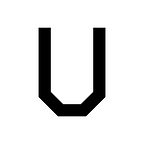Urbica and Greenpeace Russia are launching a new collaboration. We are redesigning recyclemap.ru that helps people find recycling points in their cities. The first step is a beta release.
70M tons of solid waste is produced in Russia every year, some of it needs hundreds of years to decompose. The best way to get rid of the waste is to not be creating it and to not use disposable stuff. The garbage is better be sorted by fractions: plastic, glass, paper, etc. — and recycled. Recyclemap shows, where residents can hand over the waste already sorted and ready for reprocessing.
How Is Recycling Arranged in Russia
While developing, we’ve dug into the data and found some insights. There are 13 558 recycling points in Russia, 4 626 of it in Moscow and 1 728 in St Petersburg.
Which waste fractions (plastic, glass, paper etc.) are most popular in different cities? Turns out in Murmansk mostly glass is being disposed, and in port cities — Arkhangelsk, Vladivostok, Sochi—metal is in demand.
To figure out how accessible recycling points are we’ve calculated walking distances to them. Disposing batteries and clothes appears to be easier in St Petersburg than in Moscow.
There are five times more recycling points accepting plastic in Moscow than in St Petersburg. In both cities plastic is easier to dispose on the outskirts than in the center.
Recyclemap appears to often be an entry point to the whole environmental protection topic. It is the most popular Greenpeace online project in Russia. We’ve been creating a tool which is to become a beginner’s guide, and we’ve been doing it with love and care. By making a product simpler and easier to understand, we are hopefully widening the сonscious сonsumers community.
Figuring It Out Quick and Easy
Map’s main goal is to help quickly orient and find the objects necessary. A user was not getting an answer to “Where am I disposing the waste” at the previous recyclemap.ru. To solve this:
- Highlight the vital. The map is a context for the data, thus the accent is made on the recycling points to be readable. Instead of the congested Google Maps, we’ve created a neutral yet recognisable Mapbox style;
- Simplify the symbols. There was a lot of visual noise before the redesign: the point markers, numbers, color coding with no clues. To use the map, a lot of rules had to be learned;
- Think over the filters. We’re constantly showing all of the points. The right adjustment of the sorting and filters on the main screen help easily navigate the fractions even without color coding. If two fractions are selected in the panel, those points where both can be disposed are displayed.
- Treat the map as an interface. There were a lot of excessive elements оn the old recyclemap.ru: e.g., a list of the closest objects with no specification of what the “close” area is. Now the map has taken over most of the screen, and other UI items are arranged around it.
Finding the Way
We’ve started with understanding the user scenarios for beta. The first one is finding a recycle point, the second is getting to it. We’ve worked in the mobile first framework, backed up by the old map statistics. For the map to be helpful on a way to the point:
- Consider pedestrian navigation. The map itself is light, but there is a lot of information on the area: e.g., the roads are highlighted and the important landmarks such as subway stations are topped up. From a user location a route can be built;
- Achieve data integrity. Inactive points stay on the map after filtering in case a user wants to look at a close but irrelevant point;
- Make the information accessible. A point’s card used appear on top of another UI element, the important information was hidden under the buttons, and a popup on the map was in conflict with the card. We got rid of everything but the card and placed the important information above. Now the card instantly shows if the point is open and how far it is.
Recycling Is Simple
One of our goals was escaping the idea that recycling is complicated. For the map to be giving a sense of accessibility:
- Ponder zoom levels. We’ve started with low zoom levels but realised we also need to work in detail on the scale of the city to overview all of the points. We also payed attention to the country level which proves recycling is going on all across the Russia;
- Reveal data density. The way the points on the map are distributed reveals they are located in all of the parts of a city;
- Collect the feedback. The data for the map is being collected by volunteers in 70 Russian cities; there is a comment form for the users to submit fresh data, becoming a part of the community.
We love maps that don’t just display data, but do help change the world.
Greenpeace Russia — ❤️ & 🔥
Try beta.recyclemap.ru and start recycling! We will be glad to hear your thoughts and suggestions on hello@urbica.co.
Urbica is an urban data analysis and visualisation company from Moscow, Russia. We experiment with data exploration UI/UX, including AR. We work with a number of Russian and international companies: Mapbox, Maps.me, Moscow Department of Transport, Yandex and others.
